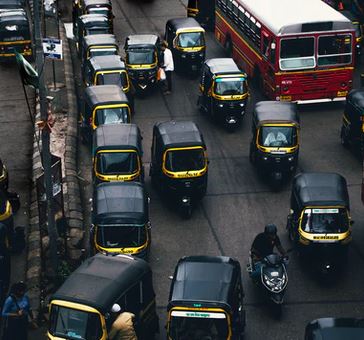New Delhi, May 18 (Reuters) – India reported a further decline in new coronavirus cases on Monday, but daily deaths remained above 4,000 and experts said the count was unreliable due to a lack of testing in rural areas where the virus is spreading fast.
For months now, nowhere in the world has been hit harder than India by the pandemic, as a new strain of the virus fuelled a surge in infections that has risen to more than 400,000 daily.
For similar articles, join our Whatsapp group for the latest updates. – click here
Even with a downturn over the past few days, experts said there was no certainty that infections had peaked, with alarm growing both at home and abroad over the highly contagious B.1.617 variant first found in India.
“There are still many parts of the country which have not yet experienced the peak, they are still going up,” World Health Organization Chief Scientist Soumya Swaminathan was quoted as saying in the Hindu newspaper.
Swaminathan pointed to the “very high” national positivity rate, at about 20% of tests conducted, as a sign that there could be worse to come.
“Testing is still inadequate in a large number of states. And when you see high test positivity rates, clearly we are not testing enough.
“And so the absolute numbers actually don’t mean anything when they are taken just by themselves; they have to be taken in the context of how much testing is done, and test positivity rate.”
Having begun to decline last week, new infections over the past 24 hours were put at 281,386 by the health ministry on Monday, dropping below 300,000 for the first time since April 21. The daily death count stood at 4,106.
At the current rate India’s total caseload since the epidemic struck a year ago should pass the 25 million mark in the next couple of days. Total deaths were put at 274,390.
Hospitals have had to turn patients away while mortuaries and crematoriums have been unable to cope with bodies piling up.
Photographs and television images of funeral pyres burning in parking lots and corpses washing up on the banks of the Ganges river have fuelled impatience with the government’s handling of the crisis.
It is widely accepted that the official figures grossly underestimate the real impact of the epidemic, with some experts saying actual infections and deaths could be five to 10 times higher.
‘ILLUSION’
Whereas the first wave of the epidemic in India, which peaked in September, was largely concentrated in urban areas, where testing was introduced faster, the second wave that erupted in February is rampaging through rural towns and villages, where about two-thirds of the country’s 1.35 billion people live, and testing in those places is very patchy.
“This drop in confirmed COVID cases in India is an illusion,” S. Vincent Rajkumar, a professor of medicine at the Mayo Clinic in the United States, said on Twitter.
“First, due to limited testing, the total number of cases is a huge underestimate. Second, confirmed cases can only occur where you can confirm: the urban areas. Rural areas are not getting counted.”
A cyclone on course to hit the coast of Gujarat on Monday is expected to disrupt both testing and vaccination efforts in Prime Minister Narendra Modi’s home state, where infections have risen 30% since May 2.
While lockdowns have helped limit cases in parts of the country hit during an initial surge of infections in February and April, such as Maharashtra and Delhi, rural areas and some states are dealing with fresh surges.
The government issued detailed guidelines on Sunday for monitoring COVID-19 cases, with the health ministry asking villages to look out for people with flu-like illness and get them tested for COVID-19.
Modi has come under fire for his messaging to the public, a decision to leave key decisions on lockdowns to states, and the slow rollout of an immunisation campaign in the world’s biggest vaccine producer.
India has fully vaccinated just over 40.4 million people, or 2.9% of its population.
A top virologist told Reuters on Sunday that he had resigned from a forum of scientific advisers set up by the government to detect variants of the coronavirus.























































